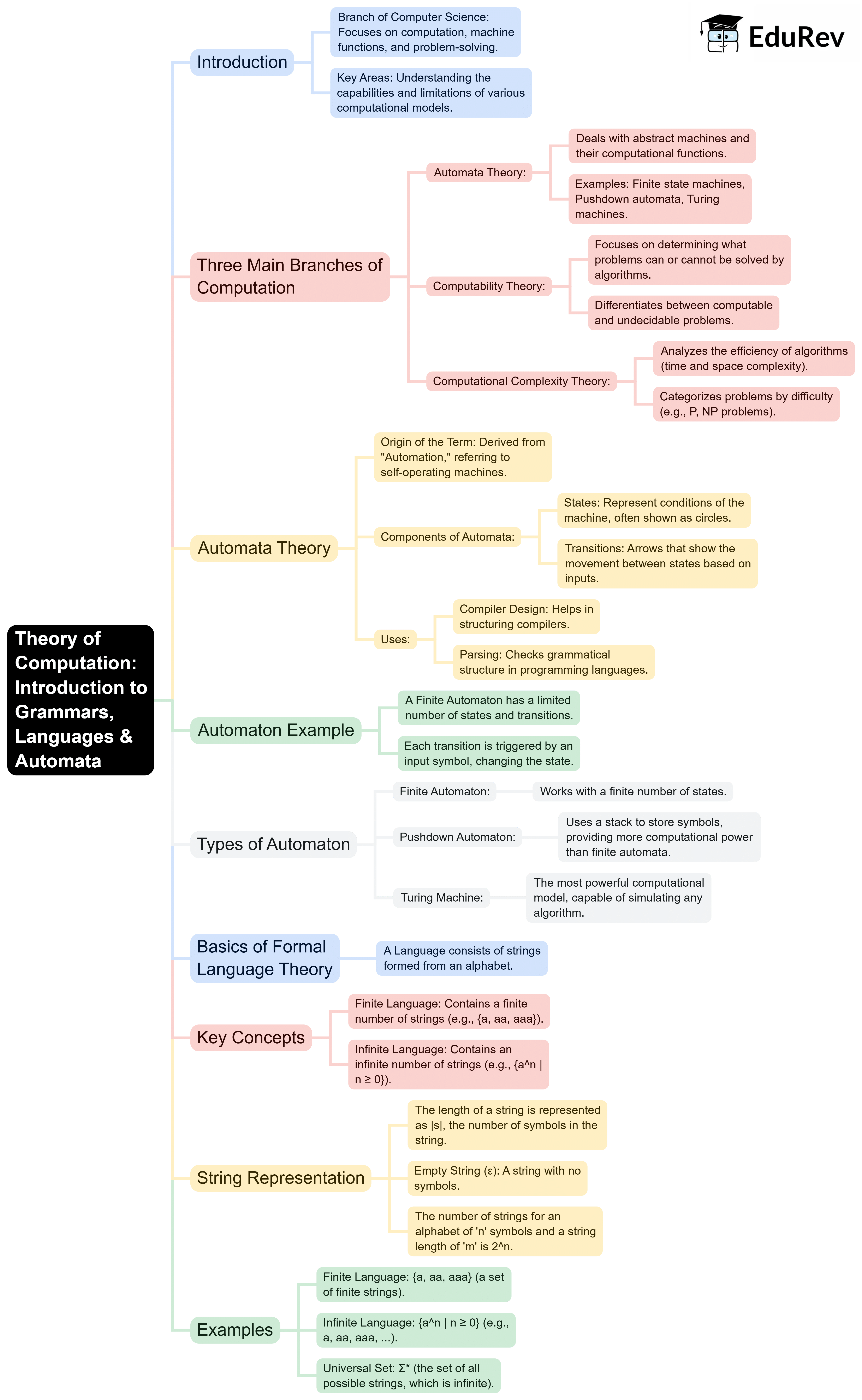Computer Science Engineering (CSE) Exam > Computer Science Engineering (CSE) Notes > Theory of Computation > Mind Map: Introduction to Grammars, Languages & Automata
Mind Map: Introduction to Grammars, Languages & Automata | Theory of Computation - Computer Science Engineering (CSE) PDF Download

The document Mind Map: Introduction to Grammars, Languages & Automata | Theory of Computation - Computer Science Engineering (CSE) is a part of the Computer Science Engineering (CSE) Course Theory of Computation.
All you need of Computer Science Engineering (CSE) at this link: Computer Science Engineering (CSE)
|
20 videos|95 docs|44 tests
|
FAQs on Mind Map: Introduction to Grammars, Languages & Automata - Theory of Computation - Computer Science Engineering (CSE)
| 1. What are the main types of grammars in formal language theory? |  |
Ans. The main types of grammars in formal language theory are categorized based on the Chomsky hierarchy, which includes:
1. Type 0: Unrestricted grammars
2. Type 1: Context-sensitive grammars
3. Type 2: Context-free grammars
4. Type 3: Regular grammars.
Each type has different rules for generating strings and different computational power.
| 2. How do automata relate to formal languages? |  |
Ans. Automata are mathematical models of computation that are used to recognize and generate formal languages. Each type of automaton corresponds to a certain class of formal languages, such as:
- Finite Automata for regular languages,
- Pushdown Automata for context-free languages,
- Linear Bounded Automata for context-sensitive languages, and
- Turing machines for recursively enumerable languages.
| 3. What is the difference between deterministic and non-deterministic automata? |  |
Ans. The primary difference between deterministic and non-deterministic automata lies in their transition functions. In deterministic finite automata (DFA), for each state and input symbol, there is exactly one transition to a next state. In contrast, non-deterministic finite automata (NFA) can have multiple possible transitions for the same state and input symbol, including transitions to no state at all (ε-transitions). Despite this difference, both types of automata recognize the same class of languages.
| 4. What are regular expressions and how are they used in computer science? |  |
Ans. Regular expressions are sequences of characters that define search patterns, primarily used for string matching and manipulation. They are utilized in various applications in computer science, such as text processing, data validation, and lexical analysis in programming language interpreters and compilers. Regular expressions can describe regular languages, which are recognized by finite automata.
| 5. Why is the study of formal languages and automata important in computer science? |  |
Ans. The study of formal languages and automata is crucial in computer science as it provides foundational knowledge for various fields such as compiler design, programming language theory, artificial intelligence, and natural language processing. Understanding these concepts helps in designing algorithms, parsing techniques, and improving the efficiency and correctness of software systems.
Related Searches





















